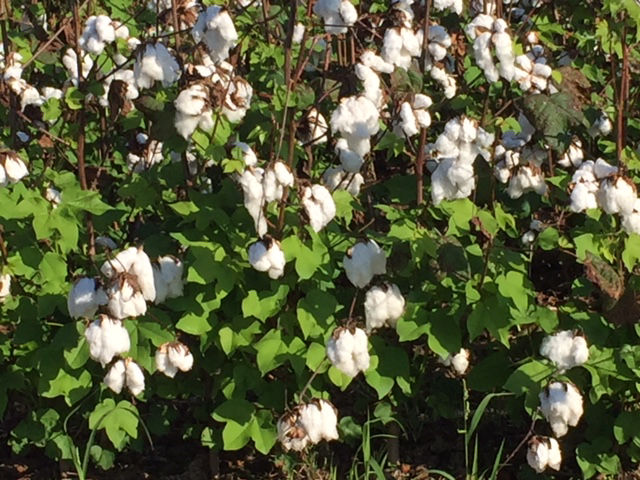5 MIN READ
Cotton Regrowth Management
March 23, 2023
- Favorable growing conditions after cutout can lead to undesirable regrowth in cotton.
- Harvest aid application of plant growth regulator thidiazuron (TDZ) can help prevent cotton regrowth.
- Defoliate only what can be harvested within 10 to 14 days after application.
Causes of Cotton Regrowth
- The main purpose of cotton defoliation is to accelerate the natural senescence of leaves without killing the whole plant. Once the demands of a boll load are met and most of the bolls have opened, the crop can use any of the remaining resources to vegetatively grow. There are few factors that can contribute to regrowth:
- Warm temperatures - Continued favorable temperatures may lead to juvenile, vegetative growth.
- Soil moisture - Regrowth begins as small tissue, so even small amounts of moisture may induce growth.
- Light penetration - The canopy can open naturally or after the application of defoliant, leading to light reaching axillary buds at the base of each branch and renewing vegetative growth.
- Fertility - Any remaining fertility in the soil may contribute to cotton regrowth.
- Reduction of thidiazuron - Lowering the rate of or omitting TDZ from harvest aid application may increase the incidence of regrowth, especially with favorable environmental conditions.1

Management Options
There are two objectives related to regrowth that may be required of a harvest aid application-- activity on juvenile growth and regrowth prevention (Table 1). Defoliate only what can be harvested within 10-14 days after harvest aid application to reduce the amount of time the crop has for potential regrowth.2
Considerations for Applying Thidiazuron
- TDZ rates can vary based on the weather, regrowth potential, and presence of juvenile tissue at defoliation. Higher temperatures and more juvenile growth require a higher application rate (3-4 oz/acre). Lower nighttime temperatures (low 60s) reduce the effectiveness of TDZ and regrowth potential.3
- Sprayer calibration is important to help prevent over or under application of TDZ. A minimum spray volume of 5 gallons/acre should be used if applied by air or 10-20 gallons/acre if applied by ground. Harvest aids are generally not plant mobile and must contact the potential area of regrowth.3
- Only apply as much harvest aid as can be harvested within the next 10-14 days.
Sources:
1Collins, G., and Edmisten. K. 2015. Considerations for cotton defoliation. North Carolina State University Extension. http://go.ncsu.edu/readext?370213
2Raper, T. B., Pieralisi, B., Miller, D. K., Sandlin, T., Roberston, B., and Wilson, B. 2022. 2022 Mid-South cotton defoliation guide. MidSouth Cotton Specialists Working Group W376. https://www.mississippi-crops.com/2022/08/22/2022-midsouth-cotton-defoliation-guide/.
3Whitaker, J., and Freeman, M. 2018. A few comments on cotton defoliation in 2018 with a limited supply of Thidiazuron. https://site.extension.uga.edu/colquittag/2018/09/a-few-comments-on-cotton-defoliation-in-2018-with-a-limited-supply-of-thidiazuron-whitaker-and-freeman/
4Whitaker, J., and Collins, G. 2020. Cotton defoliation/Harvest aid options. University of Georgia Extension. https://site.extension.uga.edu/
1414_64889
You may also like...
Here are some articles that may also be of interest to you